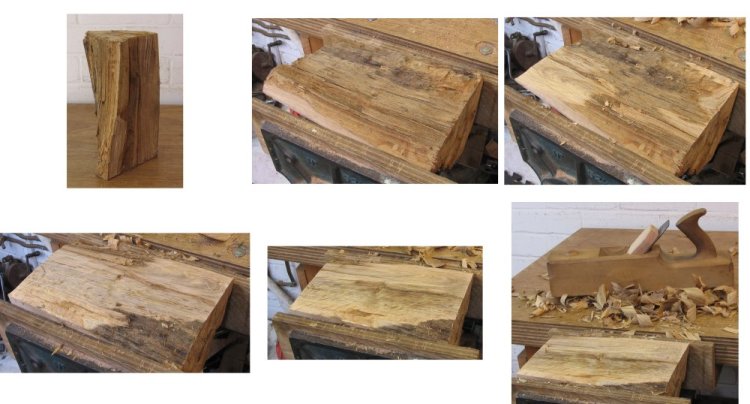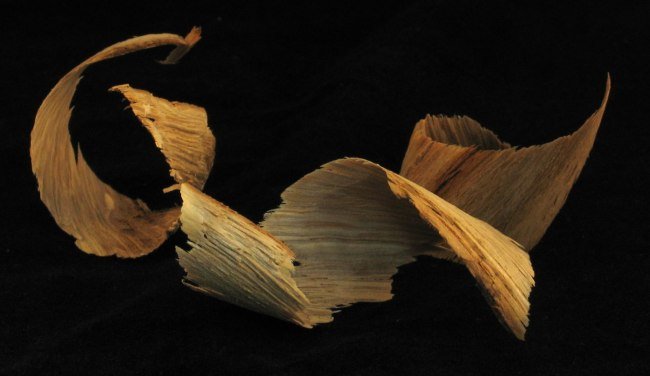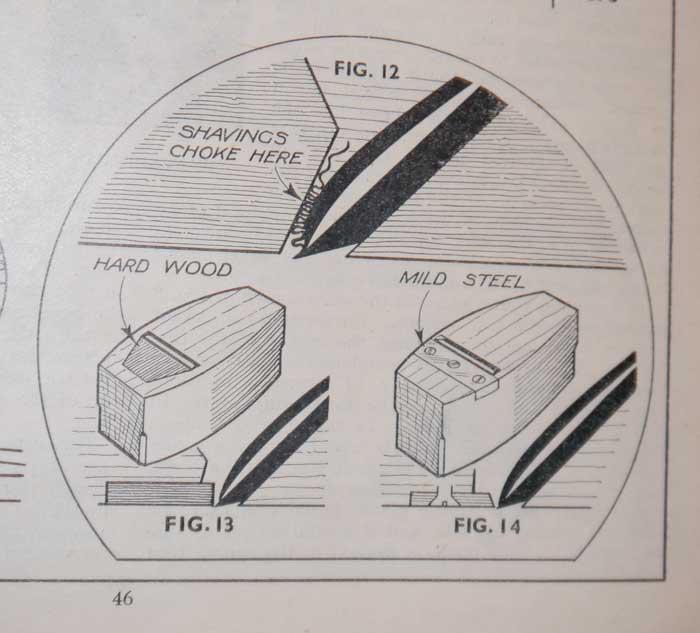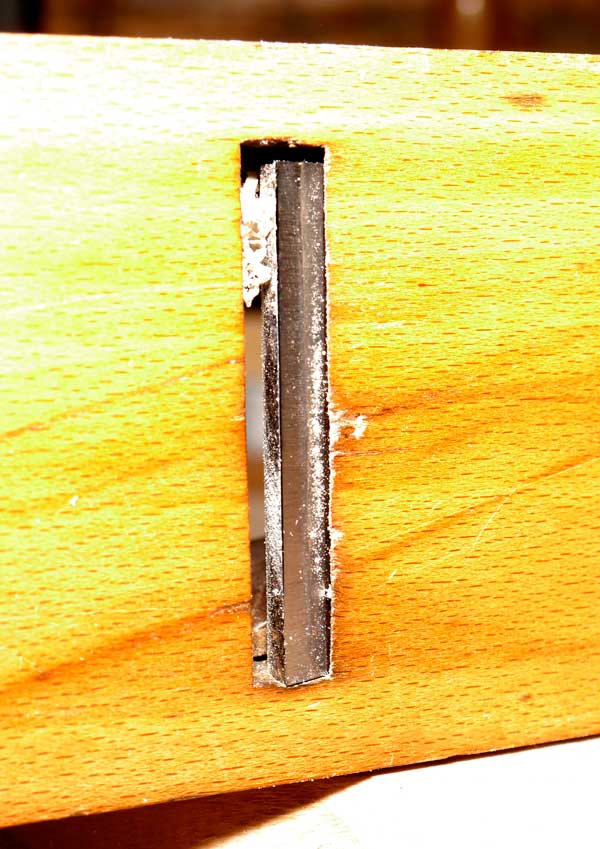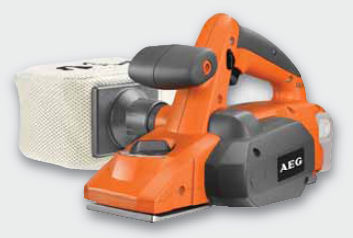condeesteso
Established Member
This was prompted by a chat with Richard Arnold at Mac on Sunday, and also slightly by Richard Maguire doing a clean-up of a shoulder plane recently.
I acquired a woodie jack for £8 recently - nice and workable with a good Ward blade, but not an investment piece by a long stretch.
I first got it as I had an urgent need for an aggressive scrub plane. Of course I found a way round the scrub excuse, but got the plane anyway (complete with a woodie block plane and a very old router plane, all £8). So I thought I would modify it to see if I could make it more pleasing to handle and use (that being purely personal - what might feel right for me).
Here we go, so far (blade and cap out, need corrodip so trip to Jim's):
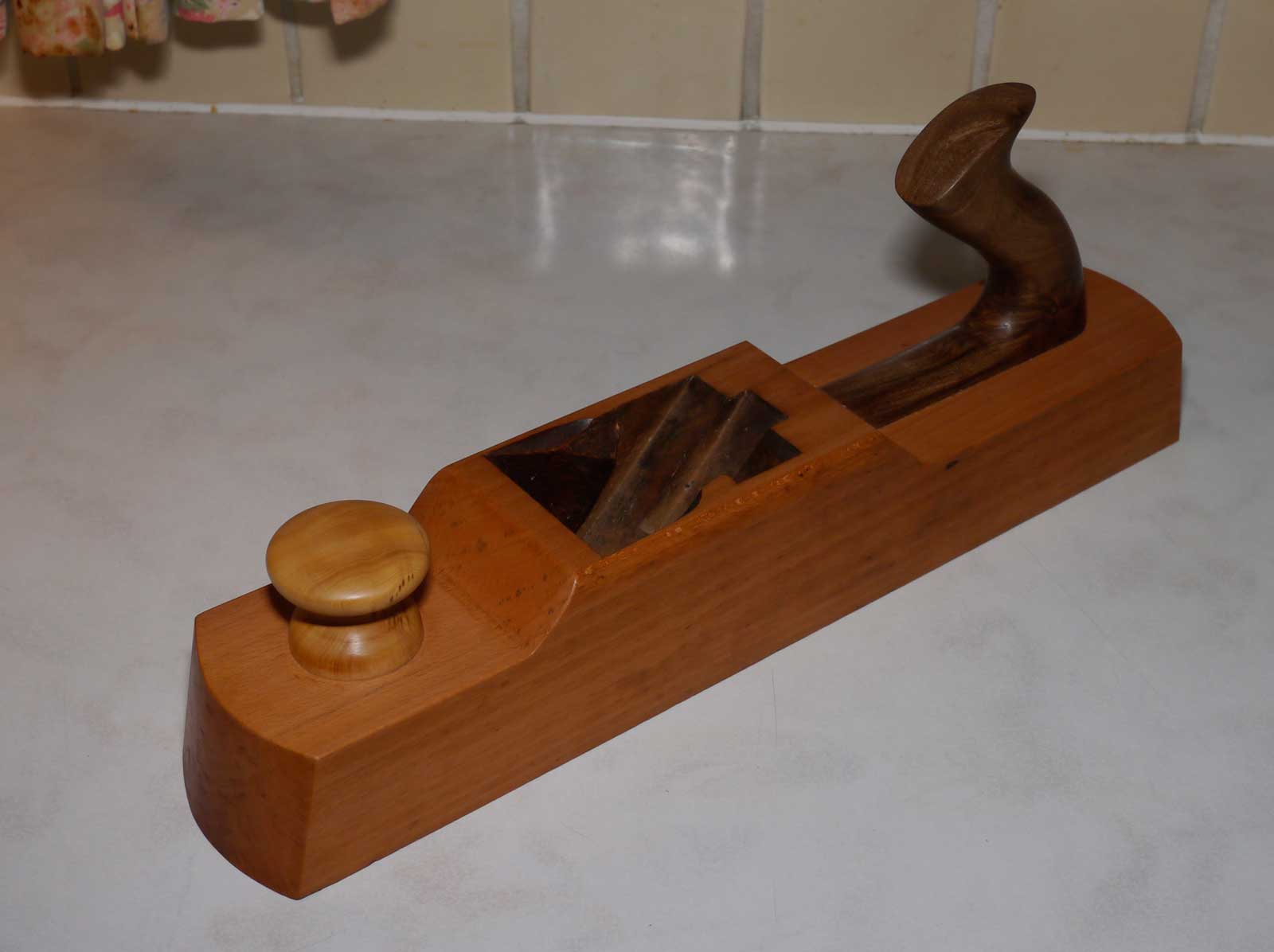
I'd call this the first in the Dreadnought Class
I've spent longer on this than allowed, it messed up a 'working' day but never mind. The ideas have been to drop the centre of gravity a little (admittedly not much), make the front knob far more comfy and also to serve to tap for depth adjustment (tap, not whack). A tote that feels nice and leans forward more than usual to point force more down to the blade (woodies being light and benefiting from some downward pressure).
The tote is a scrap of wild walnut, with a grain flow that suits the tote shape well:
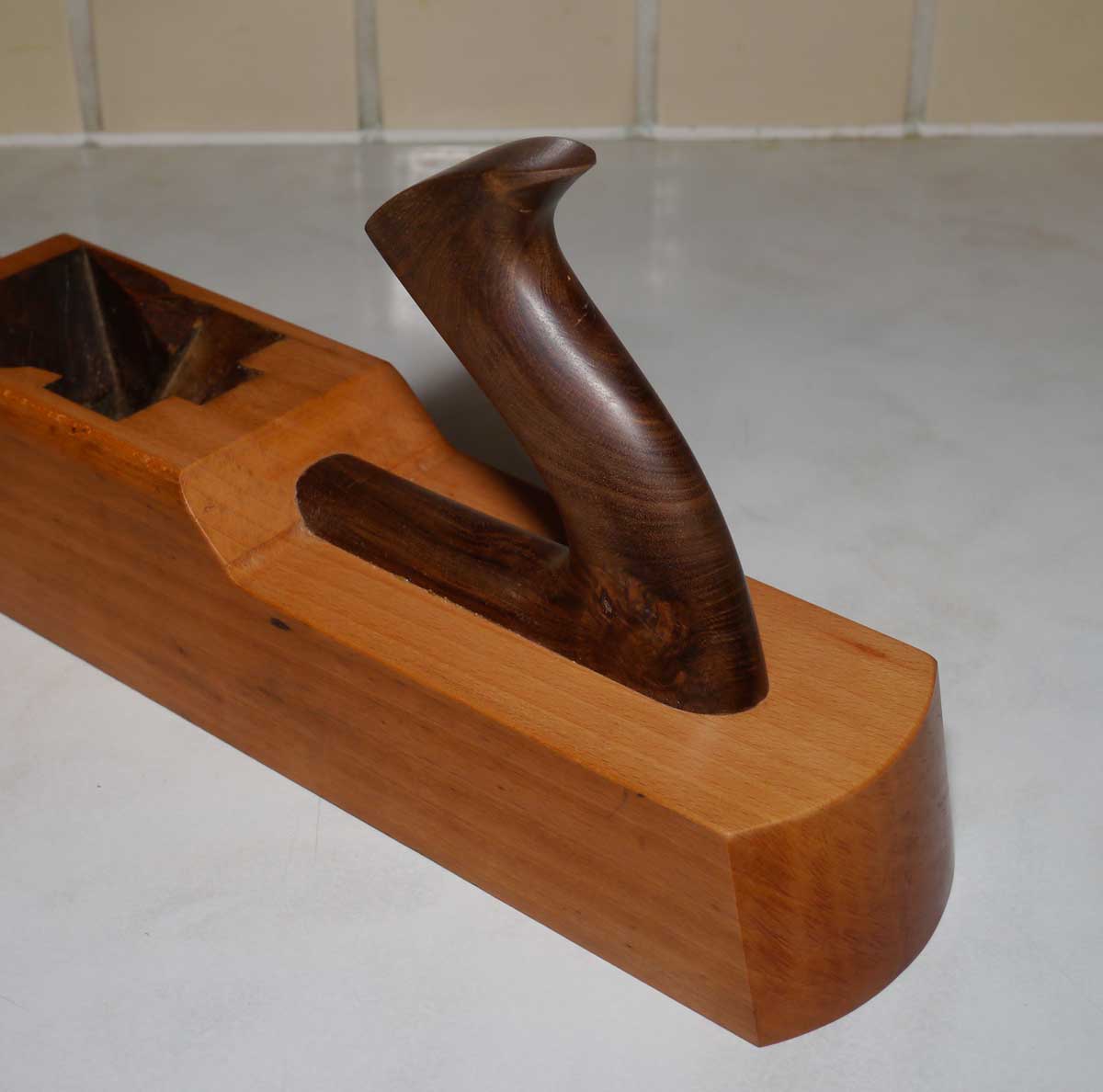
I enjoy shaping handles - this was bandsaw, then round-over on router table, with all the real profiling using hand-stitched rasps... surely the best tool for a quick and fluid result. Abrasives to finish. I aimed for no flat surfaces anywhere (except in the tenon!) - I don't like those machine-made looking totes.
I can see a box insert going into the sole, but will tune the blade and cap first.
Oh yes, also took a skim off the sole (using my infill first, then the borrowed Philly smoother with Holtey blade, 55 pitch).
Modifying old woodies like this may seem wrong, but my view is there are so many around we cannot possibly save them all, let alone restore and use them. This was not a fine example so why not?
Any more out there??
I acquired a woodie jack for £8 recently - nice and workable with a good Ward blade, but not an investment piece by a long stretch.
I first got it as I had an urgent need for an aggressive scrub plane. Of course I found a way round the scrub excuse, but got the plane anyway (complete with a woodie block plane and a very old router plane, all £8). So I thought I would modify it to see if I could make it more pleasing to handle and use (that being purely personal - what might feel right for me).
Here we go, so far (blade and cap out, need corrodip so trip to Jim's):

I'd call this the first in the Dreadnought Class
I've spent longer on this than allowed, it messed up a 'working' day but never mind. The ideas have been to drop the centre of gravity a little (admittedly not much), make the front knob far more comfy and also to serve to tap for depth adjustment (tap, not whack). A tote that feels nice and leans forward more than usual to point force more down to the blade (woodies being light and benefiting from some downward pressure).
The tote is a scrap of wild walnut, with a grain flow that suits the tote shape well:

I enjoy shaping handles - this was bandsaw, then round-over on router table, with all the real profiling using hand-stitched rasps... surely the best tool for a quick and fluid result. Abrasives to finish. I aimed for no flat surfaces anywhere (except in the tenon!) - I don't like those machine-made looking totes.
I can see a box insert going into the sole, but will tune the blade and cap first.
Oh yes, also took a skim off the sole (using my infill first, then the borrowed Philly smoother with Holtey blade, 55 pitch).
Modifying old woodies like this may seem wrong, but my view is there are so many around we cannot possibly save them all, let alone restore and use them. This was not a fine example so why not?
Any more out there??



































